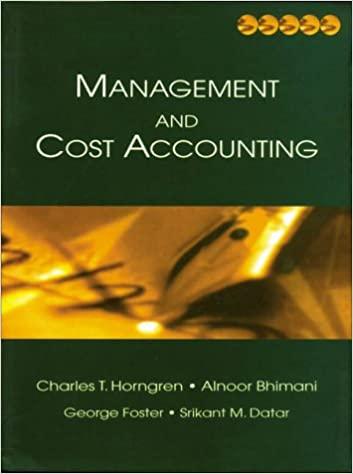

 Solve and explain n,o
Solve and explain n,o
Financial statements for Stuart Company follow. STUART COMPANY Balance Sheets As of December 31 2019 2018 $ 23,500 21,500 56,000 141,000 25,000 267,000 27,000 285,000 33,000 $612,000 $ 19,500 7,500 48,000 149,000 10,000 234,000 20,000 270,000 28,000 $552,000 Assets Current assets Cash Marketable securities Accounts receivable (net) Inventories Prepaid items Total current assets Investments Plant (net) Land Total assets Liabilities and Stockholders' Equity Liabilities Current liabilities Notes payable Accounts payable Salaries payable Total current liabilities Noncurrent liabilities Bonds payable Other Total noncurrent liabilities Total liabilities Stockholders' equity Preferred stock, (par value $10, 5% cumulative, non-participating; 8,000 shares authorized and issued) Common stock (no par; 50,000 shares authorized; 10,000 shares issued) Retained earnings Total stockholders' equity Total liabilities and stockholders' equity $ 32,200 98,800 24,000 155,000 $ 9,100 85,000 18,000 112,100 130,000 30,000 160,000 315,000 130,000 25,000 155,000 267,100 80,000 80,000 137,000 297,000 $612,000 80,000 80,000 124,900 284,900 $ 552,000 2018 $360,000 8,000 368,000 STUAR COMPANY Statements of Income and Retained Earnings For the Years Ended December 31 2019 Revenues Sales (net) $380,000 Other revenues 11,000 Total revenues 391,000 Expenses Cost of goods sold 190,000 Selling, general, and administrative 70,000 Interest expense 12,500 Income tax expense 98,000 Total expenses 370,500 Net earnings (net income) 20,500 Retained earnings, January 1 124,900 Less: Preferred stock dividends 4,000 Common stock dividends 4,400 Retained earnings, December 31 $137,000 148,000 65,000 11,700 97,000 321,700 46,300 87,000 4,000 4,400 $124,900 Required Calculate the following ratios for 2019 and 2018. Since 2017 numbers are not presented, do not use averages when calculating the ratios for 2018. Instead, use the number presented on the 2018 balance sheet. a. Working capital. b. Current ratio. (Round your answers to 2 decimal places.) c. Quick ratio. (Round your answers to 2 decimal places.) d. Receivables turnover (beginning receivables at January 1, 2018, were $49,000). (Round your answers to 2 decimal places.) e. Average days to collect accounts receivable. (Round your intermediate calculations to 2 decimal places and your final answers to the nearest whole number.) f. Inventory turnover (beginning inventory at January 1, 2018, was $155,000). (Round your answers to 2 decimal places.) g. Number of days to sell inventory. (Round your intermediate calculations to 2 decimal places and your final answers to the E nearest whole number.) h. Debt to assets ratio. (Round your answers to the nearest whole percent.) i. Debt to equity ratio. (Round your answers to 2 decimal places.) j. Number of times interest was earned. (Round your answers to 2 decimal places.) Ek. Plant assets to long-term debt. (Round your answers to 2 decimal places.) I. Net margin. (Round your answers to 2 decimal places.) Em. Turnover of assets. (Round your answers to 2 decimal places.) En. Return on investment. (Round your answers to 2 decimal places.) o. Return on equity. (Round your answers to 2 decimal places.) p. Earnings per share. (Round your answers to 2 decimal places.) Eq. Book value per share of common stock. (Round your answers to 2 decimal places.) r. Price-earnings ratio (market price per share: 2018, $12.50; 2019, $14.00). (Round your intermediate calculations and final answer E to 2 decimal places.) s. Dividend yield on common stock. (Round your answers to 2 decimal places.) 2018 121,900 $ $ 2.09 2019 112,000 1.72 0.65 7.31 times 50 days 1.31 times 279 days 51 % a. Working capital b. Current ratio C. Quick ratio d. Receivables turnover e. Average days to collect accounts receivable Inventory turnover 9. Average days to sell inventory h. Debt to assets ratio i. Debt to equity ratio j. Number of times interest earned k. Plant assets to long-term debt 1. Net margin m. Asset turnover n. Return on investment 0. Return on equity p. Earnings per share 9. Book value per share C. Price-earnings ratio s. Dividend yield 0.67 7.42 times 49 days 0.97 times 376 days 48 % 0.94 13.25 times 1.74 12.86% 0.65 1.06 10.48 times 1.78 5.39% 0.65 1.65 per share 21.70 per share 8.48 3.14% 4.23 per share 20.49 per share 2.96 3.52 %


 Solve and explain n,o
Solve and explain n,o





